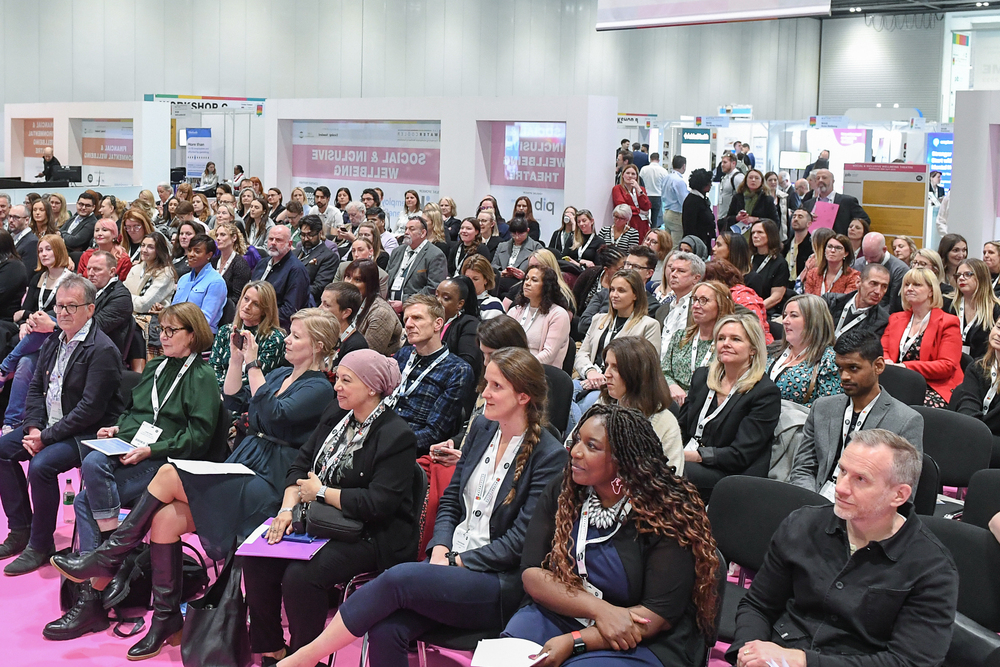In light of a recent report examining the workplace wellbeing challenges employers face post-lockdown, Pippa Andrews, Director of Corporate Business for Vitality, explores the areas that organisations most need to be aware of.
Multiple lockdowns will undoubtedly leave a long-lasting legacy on the UK. Britain’s homeworkers may have been shielded from some of the more immediate aspects of Covid-19 during the pandemic, but the health impact – physical and mental – has been high for a range of reasons.
The recent ‘Healthy Hybrid: A Blueprint for Business’ report[1], co-produced by Vitality and the RSA, explored exactly that. Focusing on four key areas of workplace wellbeing that have been impacted, it draws out the lessons learned for managers and employers looking to create inclusive productivity gains for their workforce while keeping staff happy and healthy.
As the ‘Healthy Hybrid’ report shows, remote working is likely to continue well beyond the pandemic in line with changing employee expectations, with only 16% of homeworkers preferring to work in a physical location full-time in the future. The onus is on employers, then, to build and embed ways of working that balance the best of both worlds in a way that’s productive and sustainable for staff. Here are four key learnings from lockdown for organisations to bear in mind as we enter another ‘new normal’.
One of the biggest ‘long lockdown’ challenges will be mental health
Maintaining good levels of mental health is a key area for managers to monitor for a ‘long lockdown’ effect. In the short-term, returning to physical workplaces needs careful management – 50% of all homeworkers feel anxious about the return, the report found.
Separate data gathered by Vitality has suggested maintaining staff morale has been challenging for employers during the first part of 2021. Survey results from January to April of this year[2] showed that the percentage of employees reporting low life satisfaction increased from 30% to 52.9% when compared to the findings of Britain’s Healthiest Workplace in 2019. Meanwhile, the percentage of employees reporting poor mental health increased from 7.6% to 14.9% during this period, the same survey data also revealed.
Evidence suggests that employers are already taking this seriously. According to a recent survey, 96% of SME leaders identified mental health as a top priority. Furthermore, 39% stated that the wellbeing and health of their employees is likely to have the biggest impact on their decision making over the next year[3]. Meanwhile, the ‘Healthy Hybrid’ report revealed that 77% believed their employer has done enough to support their wellbeing, while one in four (44%) remote workers found it easier to manage their mental health at home.
Lockdown has created an ‘ergonomic timebomb’
At various points, the pandemic has caused widespread physical inactivity and increased sedentary behaviour. Adding to this, working from home in cramped or unsuitable conditions has raised fears of musculoskeletal injuries and backpain – something the report calls an ‘ergonomic timebomb’.
According to a survey by Nuffield Health during the first lockdown, 45% of remote workers said they were spending more time at their workstation than they would normally at their place of work, while 70% said they were experiencing more aches and pains in their back, neck, shoulders, legs and joints, as well as more eye strain and headaches than usual when working from home.
However, despite this, the ‘Healthy Hybrid’ survey found that many adults believe the switch to working from home has made it easier for them to maintain physical fitness levels (51%) and do regular exercise (57%). Suggesting that managers and leaders have an opportunity to harness this flexibility and promote a genuinely healthy approach to hybrid working.
Homeworkers are working harder – however this might not be sustainable
Some surveys suggest that rather than dropping off a cliff, productivity may have risen. However, uncertainty remains around how real or sustainable these gains are, with fears that some homeworkers are following an unhealthy approach that could lead to burnout. Aligning flexibility with a more inclusive model for productivity is a key opportunity for employers looking to secure a healthy hybrid approach to working, according to the report.
The survey found that 55% of homeworkers said working from home meant they found it easier to get more work done – with men and women working around three hours extra per week on average. Meanwhile, the CIPD evidence review on remote working found that 70% of homeworkers believe they were at least as productive as in the office[4]. Equally, Vitality data shows that 40% of people are replacing the one hour on average gained from their commute with extra time working.
The key for managers and leaders is to try to only raise productivity that is conducive to wellbeing and therefore sustainable in the long-term. This would be a significant shared value boon to employees, employers, the economy and ultimately society.
The negative effects of lockdown are not spread equally
While many aspects of the pandemic experience are universal, many of the painful effects are not evenly distributed, the report also showed. The evidence from lockdown suggest three groups – female caregivers, young people and some ethnic minorities – have all suffered disproportionately.
According to analysis from the RSA, 27.4% of women reported worse concentration than usual, compared to 18.4% of men. This rises to 31.3% of women versus 22.3% of men when looking only at those working from home. Worryingly, this rises further to 41.2% for women and 29.6% for men when looking at homeworkers with children under 12.
Research by the Mental Health Foundation (MHF) and LinkedIn shows that 56% of people were more stressed and anxious about work than before the pandemic, but this rose to 72% and 64% for 18-24 and 24-35 age groups respectively[5]. The same research revealed they are less likely to have an effective home office set up and a survey by US firm Smartsheet found that 82% of Gen Z workers felt ‘less connected’ whilst working remotely[6].
People from a Black, Asian and minority ethnic background are more likely than their white peers to report working harder than they did before the pandemic, according to research from the Fawcett Society[7]. Adding to this, Sport England identified them to be among the most affective in terms of the drop-off in physical activity[8].
Want to hear more about how to embed fair and effective ‘Healthy Hybrid’ ways of working into your organisation? The report also lays out 10 recommendations to employers. Read it here.
[1] The RSA & Vitality (2021) Healthy Hybrid: A Blueprint for Business
[2] Vitality data collected over the period from January to April. Results based on 2011 respondents who were working from home.
[3] HR Solutions (2020) SME Challenges post Covid-19
[4] Dodd, V. (2020) Employees Want to Keep Working from Home. Skillcast.
[5] O’Sullivan, C. The challenges of home working: Why we must protect mental health during lockdown and beyond
[6] Smartsheet, 2020. Over 90% of Young Workers Having Difficulty Working from Home, Survey Finds.
[7] Women’s Budget Group, Fawcett Society, Queen Mary University of London, London School of Economics (2020) BAME women and Covid-19 – Research evidence
[8] Sport England (2021) Understanding the impact of Covid-19
About the author
Pippa Andrews is Director of Corporate Business for Vitality
















